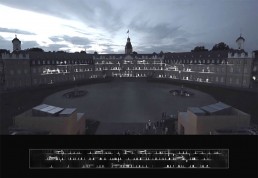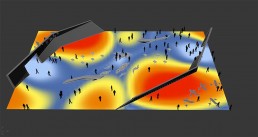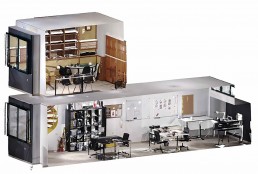Mindspaces Pilot Use Cases
MindSpaces aims to support the following four main Pilot Use Cases (PUCs).

PUC1: Outdoors urban environment
Users: City councils and municipalities, architecture offices architecture, academic units, VR/AR companies
Scenario: Interventions in City de Hospitalet
Application: Designing of improved, attractive city spaces
Motivation: Improve urban design in a rapidly expanding city by addressing new challenges that may arise related to its functionality, mobility, attractiveness, protection of culture and environment. MindSpaces will aim to increase sensitivity and awareness towards the cultural significance and current issues of a city, related to the environment and mobility, through innovative art installations in key locations. Thus, it can raise visibility of the city’s cultural value and increase awareness of issues related to its expansion, particularly environmental and mobility concerns. It can also generate environments that are amenable to new types of social interaction and new degrees of social connectivity with the urban fabric. This, in turn, will improve touristic potential, the wellbeing of citizens, quality of life in the area, as well as its overall economic activity.

PUC2: Inspiring workplaces
Users: Big companies, architecture offices
Scenario: Designing for Smart workplaces
Application: The designing of friendly, emotionally sensitive and functional interiorworkspaces and interior objects.
Motivation: In the past, workplace design was often unimaginative and drab, however in recent years aesthetically and functionally innovative workspaces are being created which are more capable of enabling the dynamic communication that is needed within today’s networked society. Increasing opportunities for positive social interaction in work environments leads to improved productivity and creativity across departments and teams. Emotionally appealing work environments can be inspiring, which, combined with designs that allow for more dynamic and diverse social behavior, can lead to increased and improved worker productivity and well-being. Architects and artists can guide modern workplace design in unexpected directions, to improve its appeal and effectiveness. In MindSpaces artists and architects will obtain direct user feedback as users are immersed.

PUC3: Emotionally-sensitive functional interior design
Users: Associations for the elderly, nursing homes, architecture offices, people that want to refurbish their dwellings
Scenario: Seniors’ home re-design
Application: The designing of functional home interiors
Motivation: Architectural and interior design has always aimed at creating emotionally appealing and functional environments. But it is only in recent years that emotional effects and the usability/functionality of a designed space are being assessed in an objective, quantifiable manner and in such a way that quantitative data using multiple sensors now shows great potential to support design. Additionally, the widespread availability of digital representations of past aesthetic trends and features enables their innovative re-use and integration in new designs. MindSpaces will combine these trends, enabling the realization of aesthetically sensitive interior design that integrates the end users’ responses and leverages specific aesthetic features that appeal to certain target groups.
